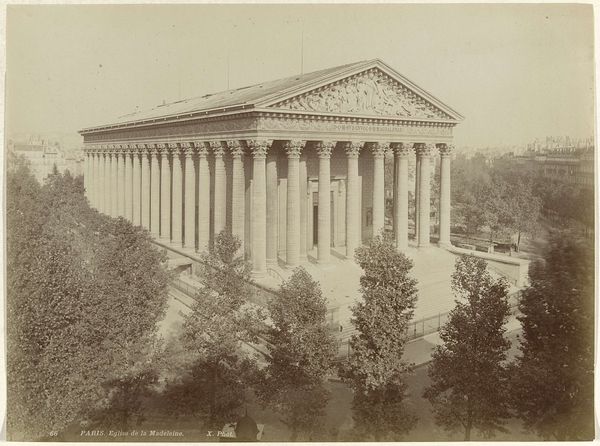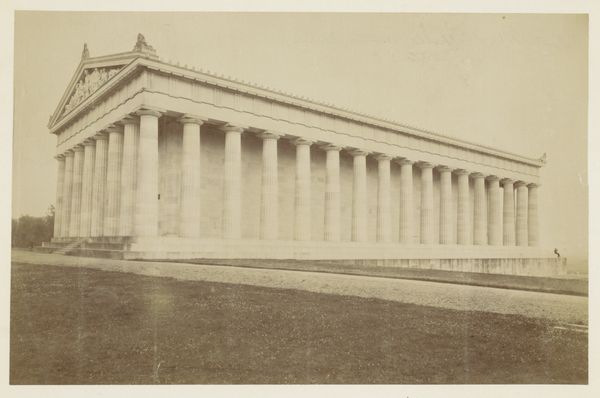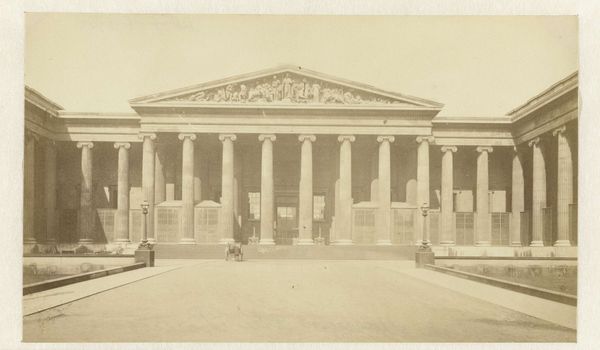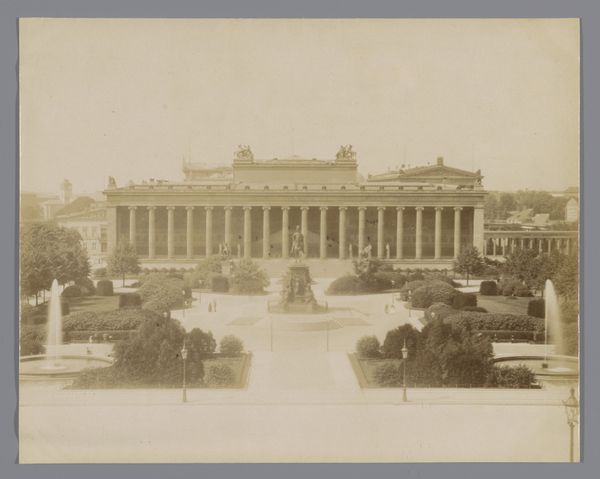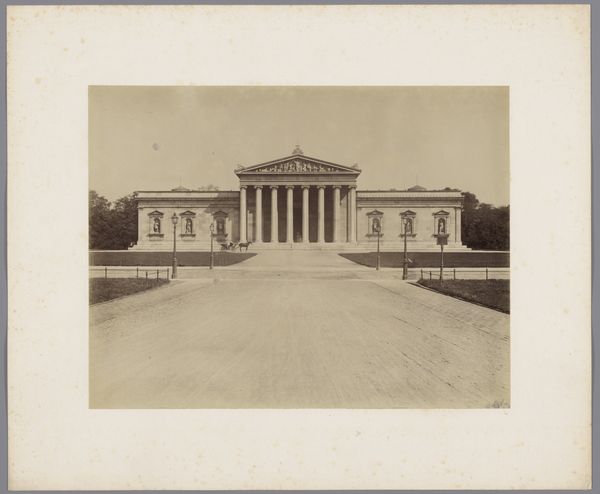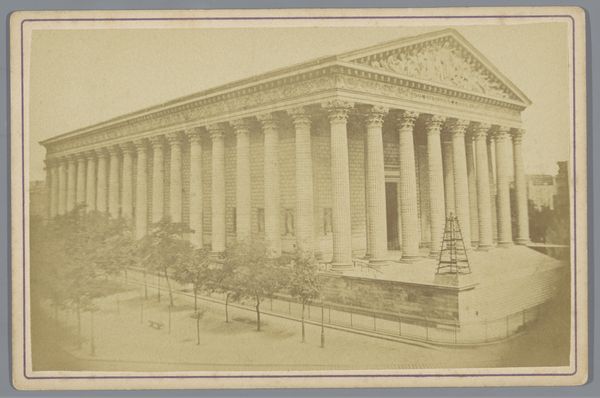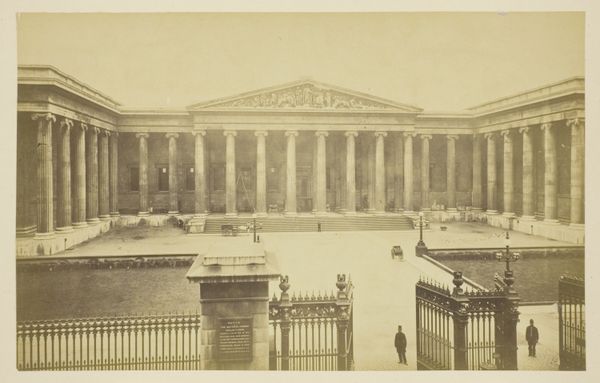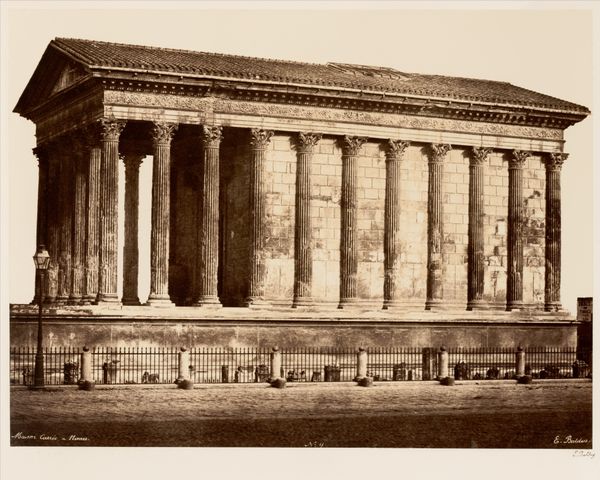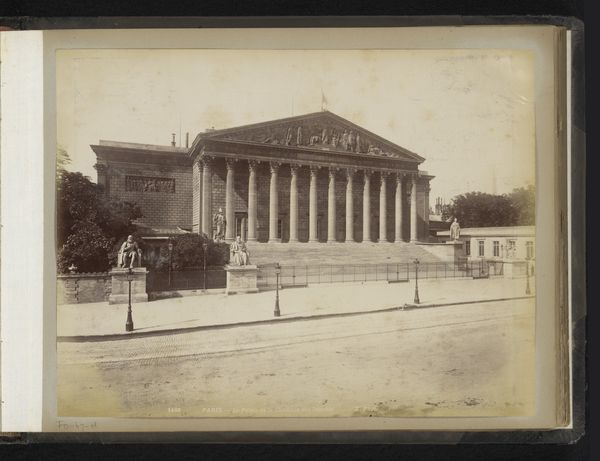
Dimensions: height 212 mm, width 275 mm
Copyright: Rijks Museum: Open Domain
Editor: This photograph, "Exterieur van La Madeleine in Parijs" by Louis Antoine Pamard, likely taken between 1880 and 1900, presents a neoclassical architectural view. The sepia tone lends a timeless quality, but also highlights the photograph's age as a mass-produced image of Paris for consumption. What are your thoughts on it? Curator: Well, from a materialist perspective, this photograph isn't just a representation of La Madeleine; it's a commodity, a printed object meant for widespread consumption. The labor involved in its production – from the photographer, Pamard, to the printers – is critical to understanding its meaning. The choice of photography itself, a then-relatively new medium, challenges older notions of artistic skill tied to painting and sculpture. It allowed for mass production, cheap access, democratizing and industrializing representation. What impact did photography have on the value of 'art'? Editor: That's an interesting take! It's easy to forget about the industrial processes behind even seemingly simple images like this. Does the fact that it's a print, something reproducible, influence how we perceive the architecture it depicts? Curator: Absolutely. Consider the social context: 19th-century Paris was undergoing massive urban restructuring. This photograph participates in creating and disseminating an image of Paris as a modern, ordered, and grand city. Photography becomes a tool for documenting and marketing urban progress. How did this shape both French national identity and the tourist gaze? Editor: So, it's less about the individual artistry and more about its role within a larger system of production and consumption. It really puts a different spin on how I see these older photographs! Thanks for your input! Curator: Indeed. By examining its materiality, mode of production and cultural purpose, we uncover the hidden economic and political structures shaping both the artwork and the viewer's perception. I hope you start questioning labor in all visual arts now!
Comments
No comments
Be the first to comment and join the conversation on the ultimate creative platform.

